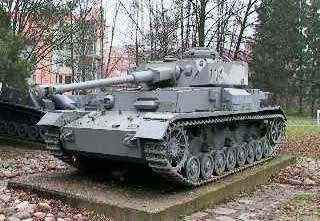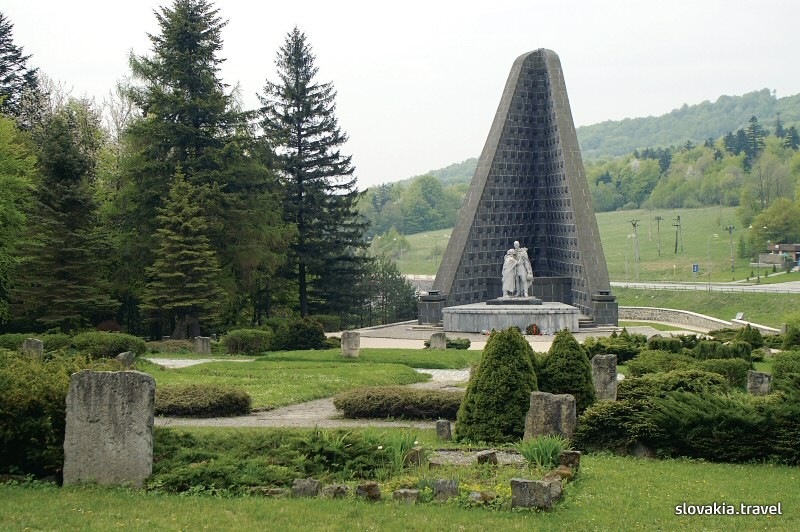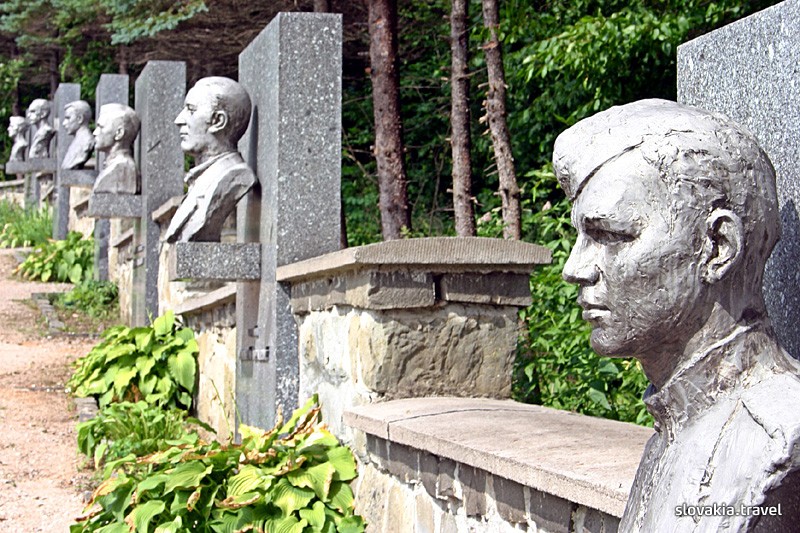Military History Slovakia Tour
Slovakia is a small land located in East-Central Europe, where the Danube River meets the Carpathians. The Carpathian mountain range dominates the country’s geography and served in the past as the stage for many important military operations. The Romans, Tartars, Hussites and Ottomans all passed through the present-day territory of Slovakia. Several anti-Habsburg uprisings by the Hungarian nobility, Austrian-Prussian battles and, later, the Carpathian front in 1915 touched Slovakia. In 1944, one of largest anti-German military uprisings was organized in the mountains of Slovakia. The Dukla Pass witnessed one of fiercest battles between the Wehrmacht and the Soviet Army and is known to this day as the Valley of Death, a place where ten of thousands of soldiers fell… Join our Military History Slovakia Tour to see the beautiful landscape, the majestic mountains and proud castles, and remember the heroes of the past.



Day 1
Arrival at Vienna/Bratislava International Airport, transfer to Bratislava, check in at the hotel, informal walking tour of the Old Town, including neo-Classical Primate’s Palace, where the 1805 Peace of Pressburg between France and Austria was signed. Visit Michael’s Gate, the only remaining entrance gate of the municipal fortifications, and its collection of historical weapons. See the Main Square with its craft market. Welcome dinner in a typical local restaurant.
Day 2
Morning trip to Devin Castle, located at the confluence of the Morava and Danube Rivers. Visit this remarkable site on the former Iron Curtain, which during the Cold War was a closed military zone. Afternoon trip along the vineyard-covered southern slopes of the Small Carpathians, with their small, charming towns, for centuries centres of wine production. Explore the massive fortifications of Cerveny Kamen Castle, once the mightiest anti-Ottoman fortress in the Carpathians and the residence of the powerful Palffy clan. Also visit a traditional, restored winemaker’s house to sample wines in Pezinok. Evening leisure time in the painstakingly restored Old Town of Bratislava, with its many excellent restaurants and cafés.
Day 3
After a morning departure from Bratislava, stop over in Trencin, site of a Roman winter military encampment in 179 AD, as recorded by an inscription on the cliff below the town’s castle. Visit the castle, from where medieval oligarch Matus Cak controlled the whole Vah River valley. Continue to Strecno, a strategic spot in the Fatra mountains, and site of heavy fighting during WWII. Visit a memorial to the French partisans who fought here alongside Slovaks. Late afternoon arrival in the High Tatras. Check in, then enjoy dinner in a mountain-style Koliba restaurant with Gypsy music.
Day 4
Morning funicular trip to Hrebienok and walk to the Cold Creek Waterfalls. Then continue to Zamagurie, an isolated region beyond the Magura Mountains on the border with Poland, inhabited by the friendly and proud Gorals. The major attraction in this region is rafting on the Dunajec River that marks border between Slovakia and Poland. Enjoy an outdoor picnic accompanied by Goral music at the Chalet Pieniny. Follow on to Bardejov, a medieval town with excellently preserved fortifications which has been listed as a World Heritage Site by UNESCO.
Day 5
This day is dedicated to the 1915 Carpathian counter-offensive of the Russian Army. Visit amazing military cemeteries designed by Slovak national architect Dusan Jurkovic, who placed them in the meditative mountain landscape that surrounds the actual battlefields. We cross to Poland for a day trip, which anticipates intensive uphill walking in the countryside (Alternative option for those who decide not to participate: Enjoy a full day in the beautiful town of Bardejov, with its Museum of Icons and open-air museum of folklore architecture).
Day 6
The Dukla Pass was the site of heavy fighting in World War II, between the Wehrmacht and the Soviet Army supported by the First Czechoslovak Army. The Germans attempted to stop the Soviet advance here and fierce fighting continued for weeks, with tens of thousands of soldiers killed. Visit the memorial area known as the Valley of Death, in which abandoned armoured military vehicles are exhibited. This region is also famous for a unique group of wooden churches which have been inscribed on UNESCO’s World Heritage List. We shall visit some of them.
Day 7
Morning departure from Bardejov to the medieval Spis Region. Visit Spis Castle, the largest castle compound in Central Europe, one of a handful that in 1241 resisted the Tartar invasion. Lunch break in Levoca, a charming medieval town and home to Master Paul, whose spectacular wooden Gothic altar will be viewed at St. James’ Church. Breathtaking drive through the Slovak Paradise National Park. Visit the village of Telgart, the site of heavy fighting during the Slovak National Uprising, and the quarry in Nemecka, now a memorial site to the mass murder of Slovak civilians during WWII. Arrival at the hotel in Tale, a resort in the Low Tatras.
Day 8
Morning excursion to Banska Bystrica, the centre of the Slovak National Uprising in 1944. Visit the Memorial Museum of the Slovak National Uprising. Leisure time to explore the beautiful restored square of this former mining town, flanked by Renaissance architecture and many outdoor restaurants. Stop at the Kremnicka Memorial, the site of the murder of civilians and POWs by the Nazis after the suppression of the Uprising. Continue to Bratislava, check in at the hotel. Farewell dinner at a typical local restaurant.
Day 9
Transfer to Vienna/Bratislava International Airport, homebound flight
Note: This is a tailor-made tour. The Slovakia Military History Tour can be organised for a closed group of a minimum of 6 participants on any given date (some date exceptions may apply). To receive a full proposal, please send us your preferences and we will quote you a price within 2 working days.

